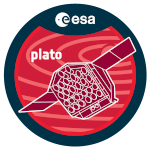In recent years, new experimental determinations of numerous nuclear reaction rates relevant for astrophysics have been achieved via direct and indirect experimental methods, highlighting specific trends like the unexpected fusion hindrance phenomenon (steep fall of the fusion cross section at very low energies) and multiple resonances. In particular, a precise determination of the nuclear reaction rates is a crucial ingredient in understanding stellar evolution. New nuclear reaction rates have been determined for the different cycles of H-burning, He-burning and C-burning phases by nuclear experiment, leading to significant changes in the nucleosynthesis, with especially consequences on s-process elements abundances. In order to improve stellar modelling, we now need to take into account these new results that can bring one of the key to understand stellar evolution and especially the chemically peculiar stars.
In particular, new direct measurements for the C12+C12 nuclear reaction have been obtained at very low energies by the STELLA collaboration in France (Fruet et al. 2020) and open the way to improvements in stellar evolution modelling. This reaction is indeed the main nuclear reaction during the advanced C-burning phase of massive stars (> 8Msol) and can drive important changes in the lifetime of this phase and in the resulting abundances, impacting later stages of the evolution. Monpribat et al. 2022 showed these new rates impact the burning lifetime as well as the production of C-burning products and s-process elements. Using the stellar evolution codes GENEC and STAREVOL, we computed new models for a larger range of mass and metallicity, and including rotation-induced mixing. We confirm previous preliminary results and highlight increased impact due to rotation as well as the dependence on the stellar mass/metallicity for the production of s-elements and final stages of stars (Dumont et al. 2023, A&A in prep.)
|
|
|
Abstracts > sorted by Authors > Monpribat EmmaImproving stellar modeling with new precise nuclear reaction rates determined from nuclear experiment
1 : Institut Pluridisciplinaire Hubert Curien
université de Strasbourg, Institut National de Physique Nucléaire et de Physique des Particules du CNRS, Centre National de la Recherche Scientifique
2 : Institut d'Etudes Avancées de l'Université de Strasbourg - Institute for Advanced Study
université de Strasbourg
|

 PDF version
PDF version
